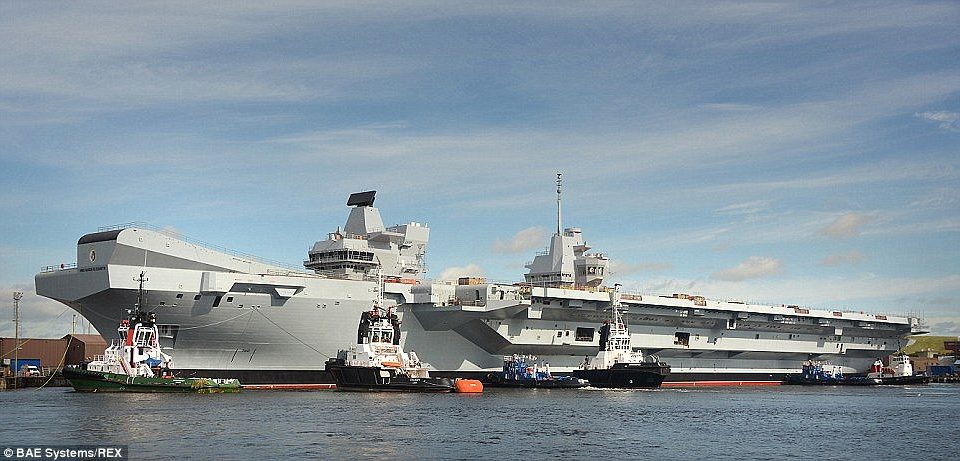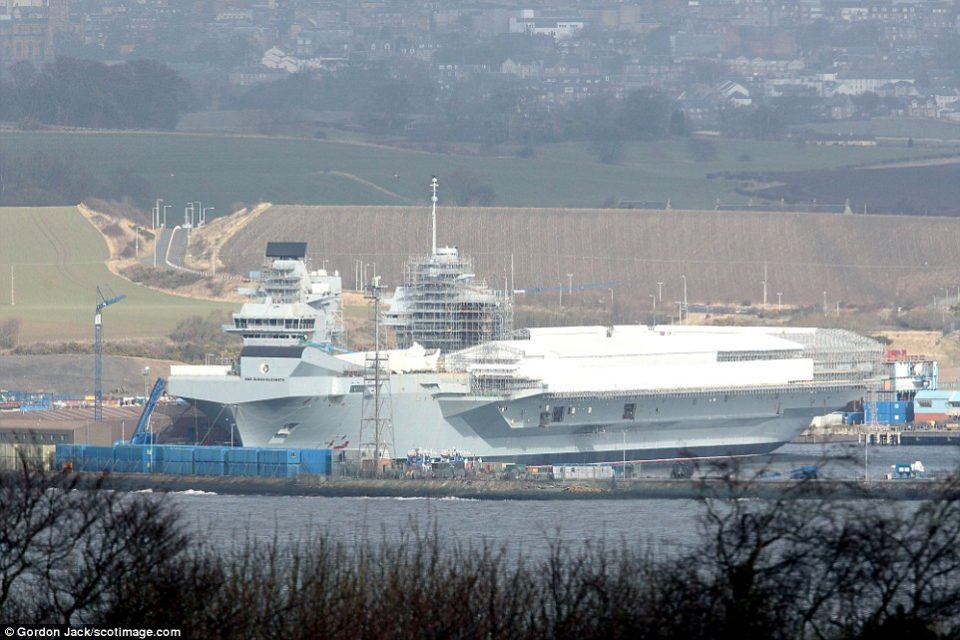2015-03-03 One of the three large warships which will operate the F-35 is the HMS Queen Elizabeth.
The ship is being completed and will begin its sea trials next year.
It is the largest warship which the United Kingdom has ever built and incorporates several innovations which we will focus on in a later story.
According to a story in the Daily Mail published March 2, 2015:
At 72,000 tons and 932 feet long, the HMS Queen Elizabeth aircraft carrier is taller than Nelson’s Column and considerably wider than the M25 at its widest point.
She generates enough energy to power Swindon, she can produce 500 tons of fresh water a day – and travel 500 miles a day, too.
Above all, she will be able to deliver 36 F-35 Lightning strike fighters and 1,000 troops from the largest piece of British sovereign territory afloat.
Her sister ship, the Prince of Wales, is already in production, though it has still not been decided whether she will be operational, mothballed or sold.
Each ship, which has a life expectancy of around 50 years, will be fitted out with more than three million metres of cable and it will have enough power to light up a small town.
This week, the Defence Secretary, Philip Hammond, described the project as a feat of engineering to match the London Olympics.
You could say much the same about the price – more than £6 billion for the pair. And that does not include the planes.
Each 65,000-tonne aircraft carrier will provide the armed forces with a four-acre military operating base, which can be deployed worldwide, operating the F-35 Lightning II and a number of types of helicopter. At full capacity, the carrier will be able to launch an aircraft every 30 seconds.
They will be versatile enough to be used across the full spectrum of military activity, from war fighting to providing humanitarian aid and disaster relief.
HMS Queen Elizabeth will have 679 permanent crew and capacity for 1,600 crew members when fully operational.
The ship features a new style of ‘twin island’ command points – one at the front for steering and one at the back for aircraft direction. Thanks to the cutting-edge technology on board, commanders on the bridge will be able to see 250 miles away.
The carrier’s range is said to be 10,000 nautical miles and the ship is fitted with a long range 3D radar that is capable of tracking more than 1,000 targets at once or spotting a tennis ball travelling at 2,000 miles per hour.
The photos in the slideshow are credited to The Daily Mail:




